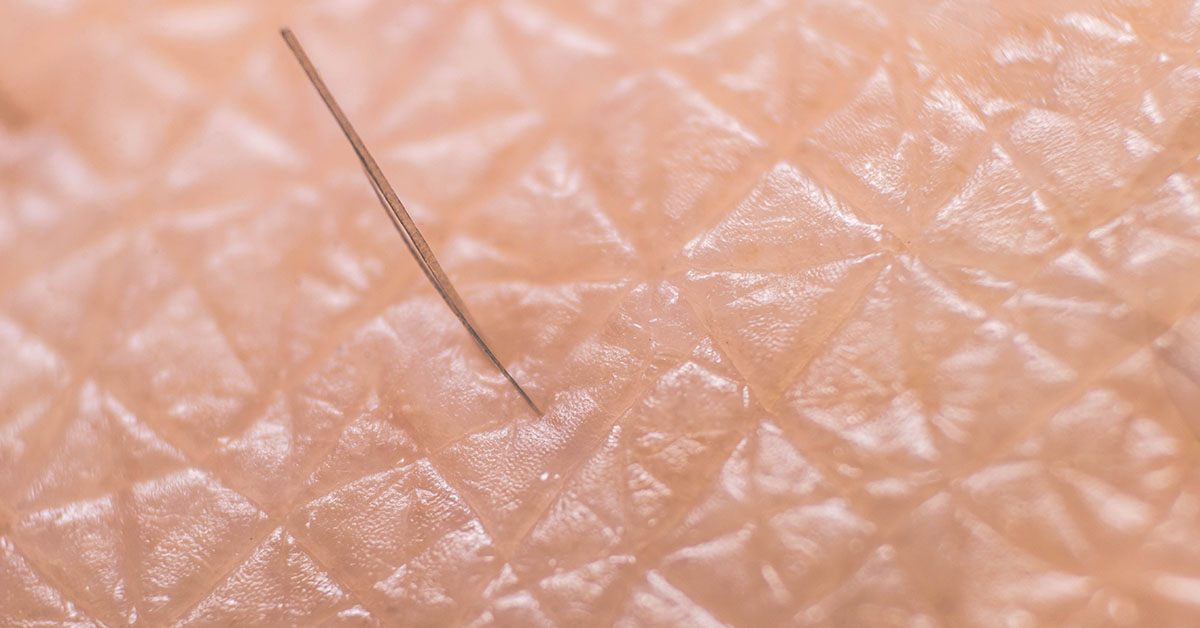What happens when a hair is plucked has been revealed by an eye-opening simulation. On the surface, it appears simple: the hair is grabbed and pulled. However, a drama unfolds beneath the surface that is rarely considered. When hair is plucked, a chain of events is initiated that is just now being properly observed by scientists.
The Hidden World Beneath Skin
Hair isn’t merely sitting atop the skin. Each strand is rooted deeply into the dermis, where it’s secured by a hair follicle. This follicle isn’t just a simple hole; it’s a tiny organ with its own blood supply, nerves, and specialized cells. When hair is plucked, this entire ecosystem is disrupted. A look into what occurs during hair removal has been provided by new high-definition simulations. What is shown might cause reconsideration of what was always assumed to be a simple grooming habit.
The Moment of Truth: What Happens During Plucking

Several things happen simultaneously when hair is pulled. First, the hair is stretched before the root finally releases. The follicle surrounding the root is damaged when the hair is extracted. It resembles a plant being yanked from the ground; not just the stem is taken but the entire root system and surrounding soil are disturbed.
The skin tissue around the hair is also pulled upward, causing tiny tears. Blood vessels near the follicle can be broken, which explains why a tiny blood dot is sometimes seen after plucking. Additional healing responses are activated by this minor bleeding. Pain signals are sent to the brain by nerve endings around the follicle, which is why some spots are more painful than others when plucked. More nerve endings are found in some areas, making them extra sensitive.
The Aftermath: Skin’s Surprising Response
What happens next is intriguing. The follicle damage is immediately detected by the body and treated as an injury. The area is flooded with white blood cells, causing inflammation, the redness seen after hair is plucked. According to the simulation, the empty follicle doesn’t remain vacant for long. It collapses slightly after plucking, and new hair is generated by special cells at the bottom that begin dividing. This process is initiated immediately, though visible regrowth won’t be seen for days or weeks. This regrowth isn’t always perfect, especially if the same spots are consistently plucked. Regrowth can be affected by hair type, plucking technique, and skin condition.
Read More: Eye-Opening Simulation Reveals What Happens Inside Your Body During Vomiting
When Hair Plucking Goes Wrong: The Ingrown Hair Dilemma
Sometimes, the original path cannot be found by the new hair because the follicle structure has been altered. Instead, it grows sideways or curls back into the skin. Ingrown hairs are caused when hair follicles are clogged with dead skin cells, forcing the growing hair to change direction. These are experienced more frequently by people with curly hair, as curly hair can more easily twist back and penetrate the skin, causing additional inflammation and sometimes infection.
Small, round bumps, itchiness, redness, and occasionally even pus-filled lumps can be caused by ingrown hairs if the condition worsens. These problems occur because the hair is perceived as a foreign object by the body, even though it’s just hair growing incorrectly.
Is Plucking the Best Option?

Now that all the trauma caused by hair plucking at the cellular level is understood, should this common habit be reconsidered? The answer isn’t straightforward and depends on individual needs and skin sensitivity. Occasional plucking isn’t considered problematic by studies, but repeated plucking in the same area can cause issues. Follicle damage that eventually prevents hair regrowth, darker spots or scarring, increased risk of folliculitis, and more ingrown hairs might be experienced.
Gentler alternatives for unwanted hair removal exist. Hair is cut at the surface by shaving without disturbing the follicle. The protein in hair is dissolved by hair removal creams without pulling it out by the root. For more permanent solutions, professional treatments like laser hair removal or electrolysis might be more effective in the long term with fewer side effects than constant plucking.
The Surprising Regeneration Connection
Something unexpected about plucking has been discovered by recent researchers. When hairs are plucked in specific patterns, hair growth is stimulated through “quorum sensing.” Chemical signals that can activate dormant nearby follicles are released when follicles are damaged in certain patterns.
This discovery could significantly impact hair loss treatments. It’s suggested that controlled, patterned plucking might someday be used as therapy to stimulate new growth in balding areas. The communication between damaged follicles and surrounding tissues indicates sophisticated signaling that scientists are beginning to comprehend and potentially utilize for medical treatments.
The Bottom Line on Plucking
When tweezers are reached for to pluck a hair, it should be remembered that more than just a strand is being pulled out. A series of biological responses involving multiple cell types, signaling molecules, and tissues is being triggered beneath the skin. While occasional stray hair plucking is probably acceptable, frequent plucking might not be optimal for long-term skin health.
Read More: Eye-Opening Simulation Demonstrates the Harmful Effects of Vaping

